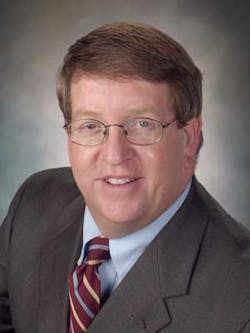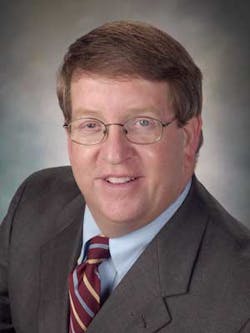Periodontal regeneration: a look at the current and future landscape
A study from the Centers for Disease Control and Prevention (CDC) has shown that approximately half of American adults over age 30 have some form of periodontal disease, and it’s even more prevalent in those age 65 and older. (1) The ultimate goal of periodontal therapy is to give the patient healthy, functional teeth while maintaining as much of their natural dental structures as possible.
Beyond its implications for oral health, it has become more apparent in the last decade that periodontal disease may also have an impact on the rest of the body. Simply put, patients who maintain healthy teeth are at less risk for systemic health issues, making it all the more critical that those with periodontal problems get treated.
Major advances in periodontal therapy have resulted in paradigm shifts in the periodontal field, resulting in more patients benefiting from care. One of the biggest advancements in recent years was the realization that periodontal tissues can be regenerated, rather than simply repairing the tissue after periodontal disease has occurred, and that periodontal regeneration can be enhanced with materials such as Emdogain™ and other protein products. (2)
These advances confirm that we can reduce inflammation — a main cause of periodontal tissue loss — and can now actually regrow some of the periodontal tissues. The protein factors found in current and emerging protein products can help us do this better and more predictably. (3) Periodontal researchers are exploring several promising possibilities for regenerative treatment:
- Researchers at Straumann with other researchers have been studying new proteins that make up Emdogain, finding that they have powerful effects on both angiogenesis (4, 5) (the growth of new blood vessels, which is necessary for any new tissue growth) and osteoinduction (6) (the formation of new bone).
- Japanese researchers have conducted studies on the fibroblast growth factor, which also facilitates the growth of blood vessels and is currently in clinical trials.
- Researchers in Europe and elsewhere have been studying a protein factor related to bone morphogenetic protein, finding that it also stimulated periodontal regeneration — a growth and differentiation factor.
But the dental community doesn’t need to wait for these studies to result in new therapies. Effective products are available now, including one of my preferred treatments: the combination of Emdogain with bone grafts.* Our studies have indicated that allograft bone particles or autogenous bone graft particles are effective at providing a base for new tissue formation. (7)This combination also helps stabilize the wound clot and, with Emdogain’s effect on cell recruitment and differentiation,(8) seems to be the most effective procedure to stimulate periodontal regeneration today. Because Emdogain can now be used to treat small and large defects, more patients can benefit from it.
It is imperative that periodontal patients receive therapy and get their tissue back to a healthy state. The availability today of proven treatments, combined with the promising research being conducted around the world, will result in more patients maintaining their own teeth and ultimately achieving better overall health.
ADDITIONAL READING …
AAP honors significant achievements in the field of periodontics
Emdogain: a game changer
References
1. Eke PI, Dye BA, Wei L, Thornton-Evans GO, Genco RJ. Prevalence of periodontitis in adults in the United States: 2009 and 2010. Journal of Dental Research 2012;91(10):914-920.
2. American Academy of Periodontology Position Paper, Periodontal Regeneration, J Periodontal 2005; 76:1601-1622.
3. Cochran et al. The effect of enamel matrix proteins on periodontal regeneration as determined by histological analyses. J Periodontol 2003;74:1043-1055.
4. Thoma et al. Angiogenic activity of an enamel matrix derivative (EMD) and EMD-derived proteins: an experimental study in mice J Clin Periodontol 2011;38(3):253-260.
5. Kauvar et al. In Vivo angiogenic activity of enamel matrix derivative. J Periodontol 2010:81(8)1196-1201.
6. Johnson et al cellular effects of enamel matrix derivative are associated with different molecular weight fractions following separation by size-exclusion chromatography. J Periodontol 2009;80(4):648-656.
7. Cochran et al. Periodontal regeneration with a combination of enamel matrix proteins and autogenous bone grafting. J Periodontol 2003;74:1269-1281.
8. Bosshardt, D. Biological mediators and periodontal regeneration: a review of enamel matrix proteins at the cellular and molecular levels. J Clin Periodontol 2008; 35 (Suppl. 8):87-105.
* Emdogain can be combined with autograft, allograft, bone-derived xenograft, beta-TCP, and bioactive glass.

